Yamaha is celebrating their 50 th anniversary in the snowmobile world in 2018. It was in 1968 that Yamaha produced their first models. In order to position themselves for larger scale production, only 300 units were produced in the first year. The 1968 SL 350 is the ancestor of all Yamaha snowmobiles. At the time, it was powered by a 350 CC two-cylinder engine developing about 20 horsepower. The front suspension was leaf sprung and the rear suspension was boogie. The oil and gas mixture had to be done manually. Already in 1969, Yamaha went into production with essentially the same snowmobile, but with an oil injection system and guillotine carburetors still used today. Racing enthusiasts will remember the GPX433, which debuted in 1974 with the first rear slide suspension. Two years later came the nostalgic 1976 SRX440, the first production liquid-cooled snowmobile. 1980 marked the arrival of the telescopic front suspension with the SRV, then Yamaha attacked the small utility market with the first edition of the Bravo 250 in 1982. 1984 marked the arrival of another Yamaha legend, the Phazer, which was Yamaha‘s best seller. Still listed today, the VK540 was introduced in 1988, a 20 inch wide by 156 inch long track, with a two speed forward and reverse transmission, a new standard in the utility snowmobile world of that time.
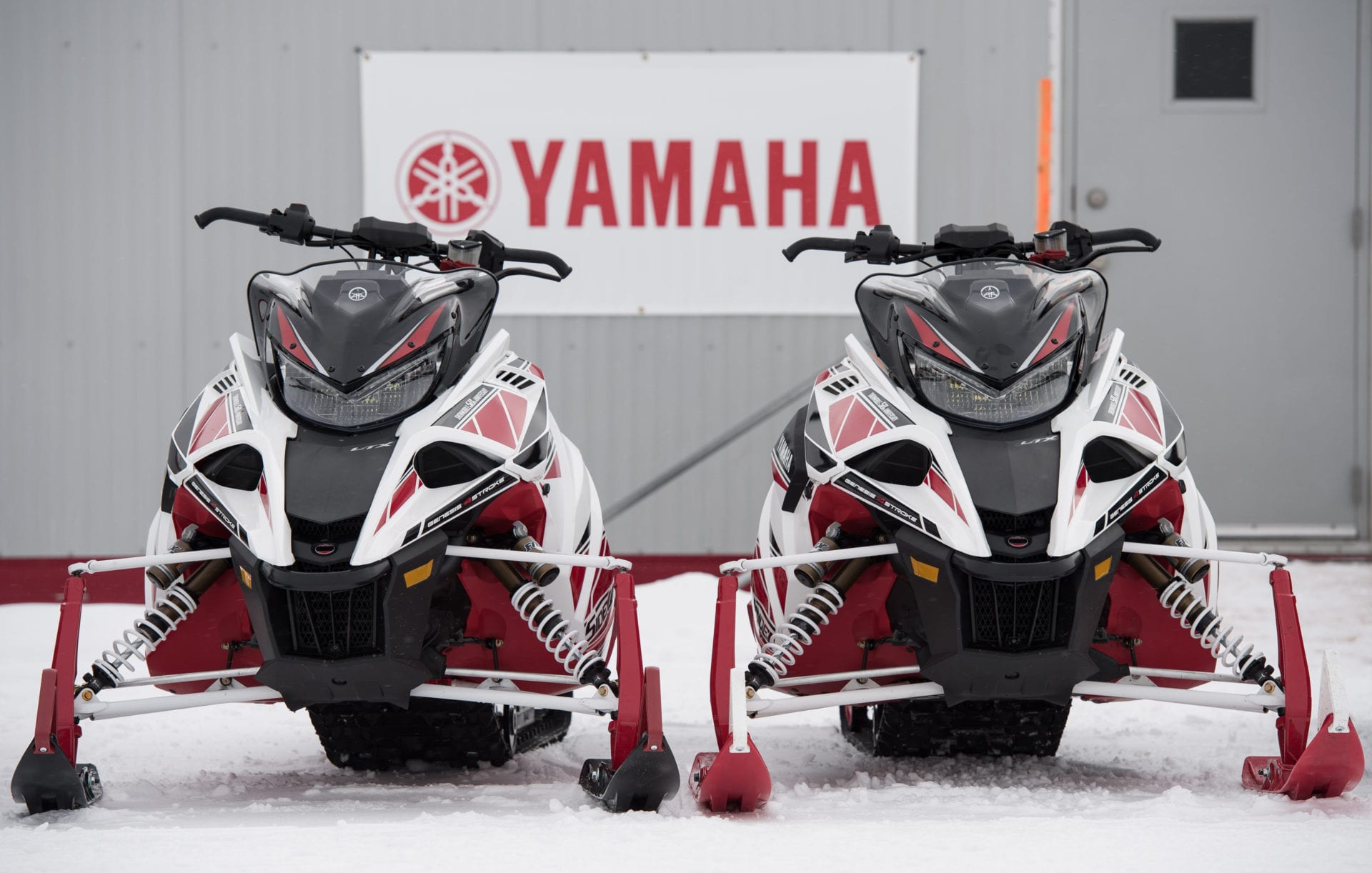
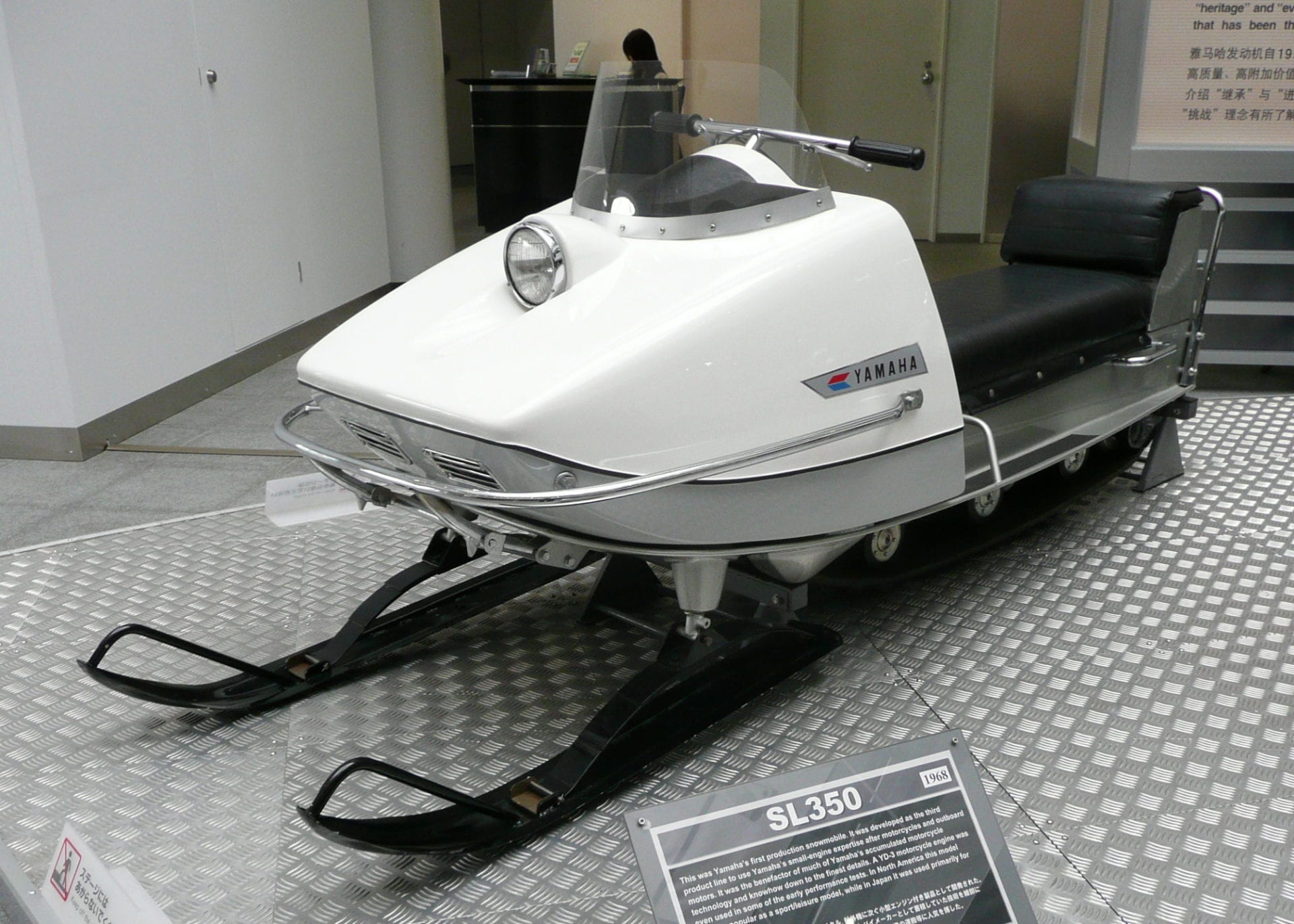
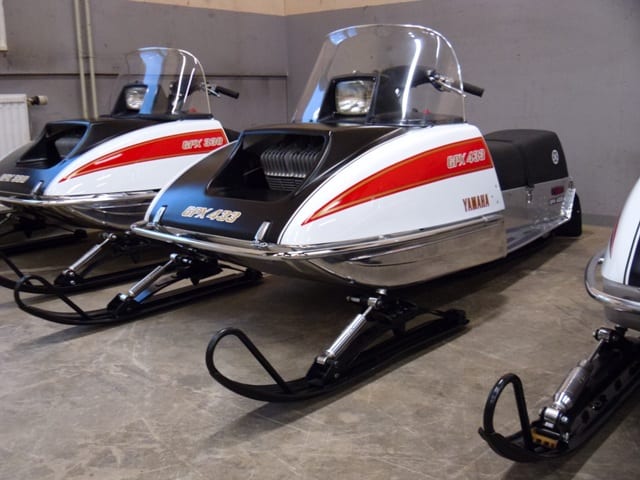
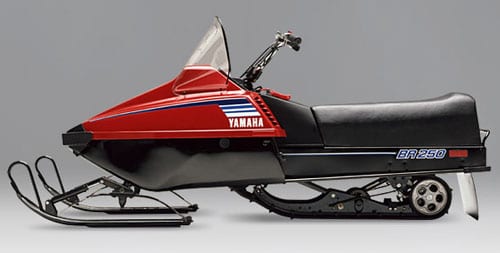
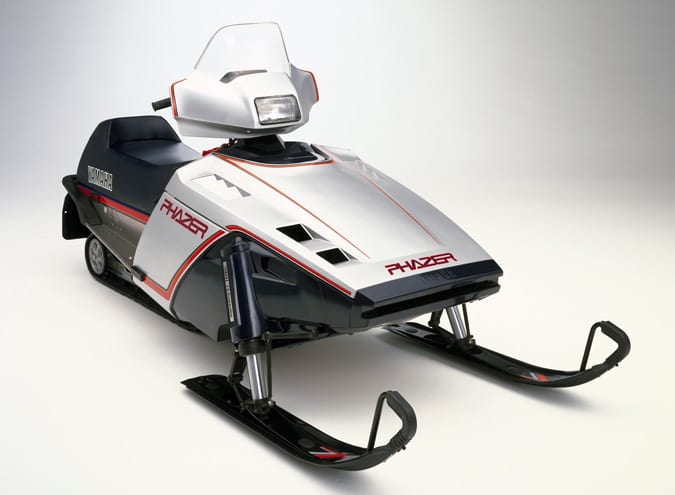
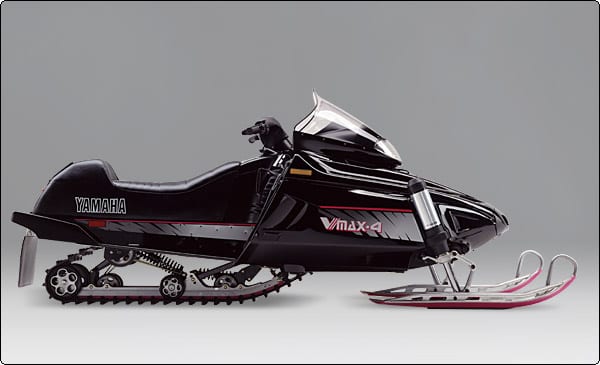
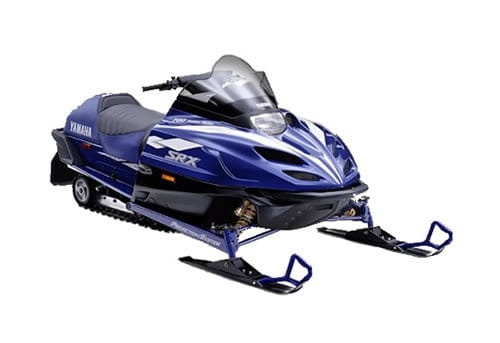
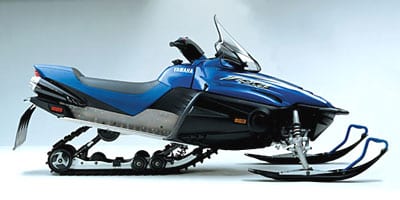
In 1992, Yamaha pushes the envelope with a 4-cylinder 800 CC, the Vmax-4! And 1998 marks the return of the SRX in a 700 version, three cylinders, three exhaust pipes. It was in 2003 that Yamaha took a major turn towards 4-stroke engine technology, although other companies already had 4-strokes in their line-up, the Japanese company pushed the envelope by introducing the famous 1000 CC 4-cylinder 4-stroke engine, the RX1, the first 4-stroke performer in the industry! Another turning point for Yamaha was undoubtedly the partnership with Arctic Cat in 2014. Yamaha needed a new chassis, with a more efficient suspension. Over the years, this agreement has been profitable for both companies. And what about the latest addition, the famous 998 CC turbocharged engine… Never seen before… Although identified at 180 horsepower, everyone knows today that this engine exceeds 200 horsepower…
The Japanese company brings us the logical next step for 2018, the expansion of the 998 turbo to several models. But also some very interesting new features, a brand new twin front shock system, introduced only on the Apex, a new two-seater snowmobile and the return of the Sno-Scoot. 2018 also marks the final year of the Apex and the 1000 CC four-cylinder four-stroke.
2018 Yamaha 50th Edition!
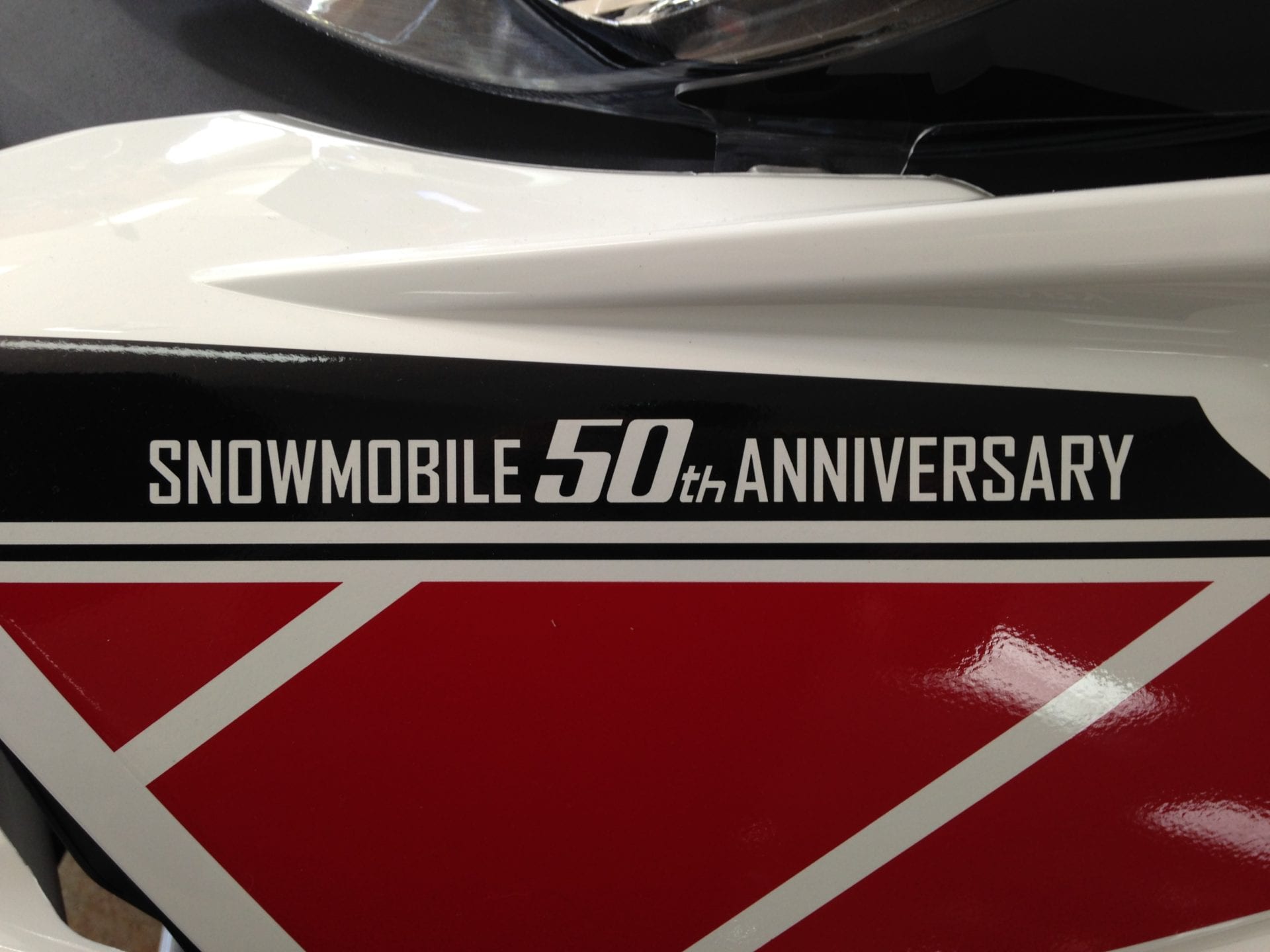
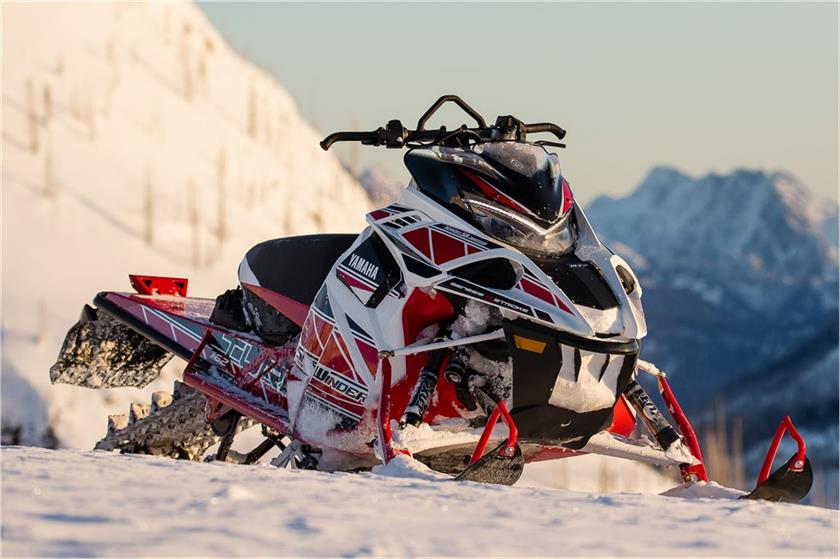
Can you think of a 50th anniversary without limited editions? Of course not, Yamaha is offering seven limited edition models for its half-century. We find in Sidewinder version an R-TX LE, an LTX LE, a B-TX LE and an M-TX LE. An SRViper L-TX LE and two APEX, one in LE version and the other in X-TX version.
2018 Yamaha Mountain Line
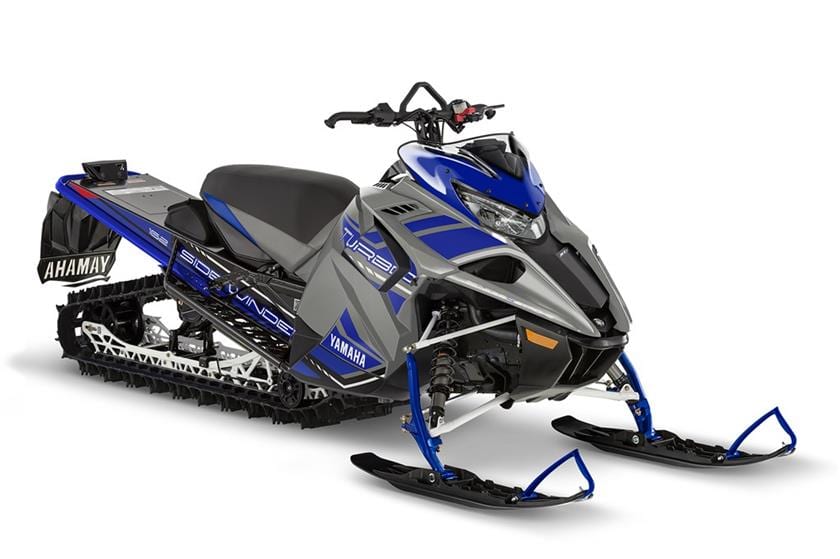
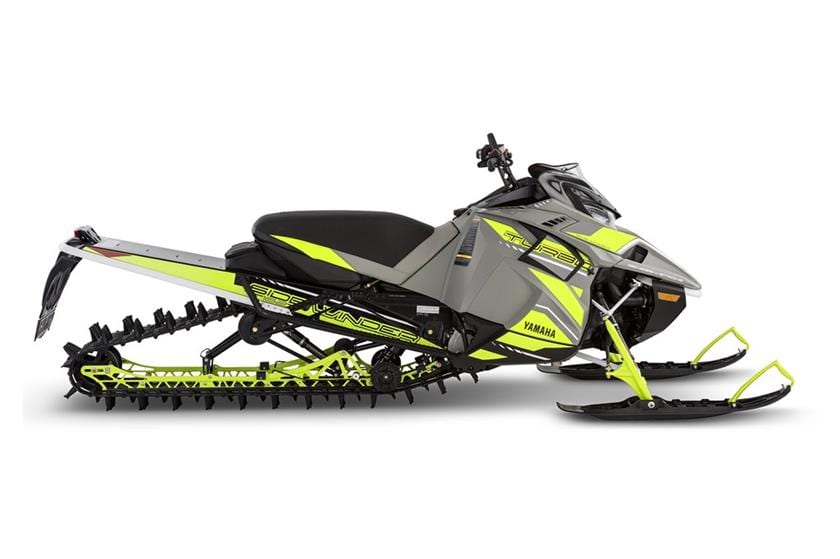
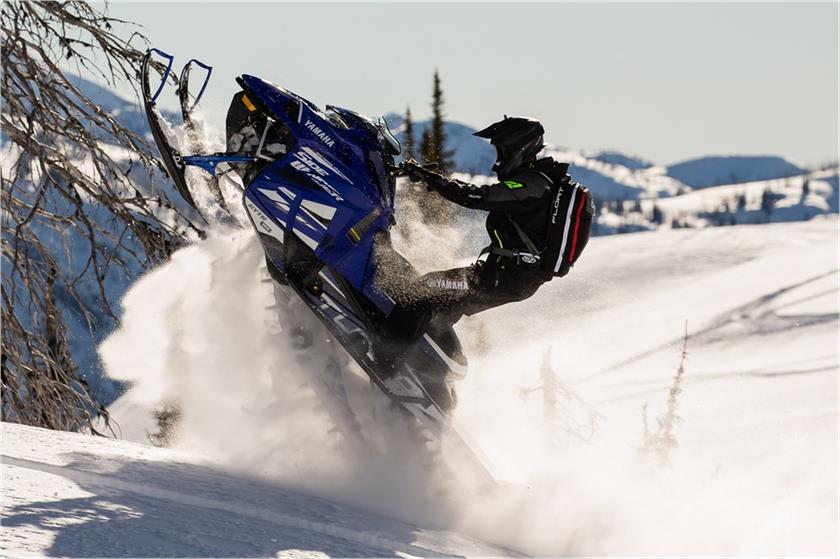
Could we expect anything less? Yamaha is introducing no less than six new Sidewinder M-TX models for 2018. There is the base, SE and LE version with either a 153 or 162 inch track. All M-TX models now have a drive shaft (sprocket) that is lower in the frame providing a better angel of attack for the track. This change frees up more space between the track and the tunnel, allowing for the use of 8-tooth sprockets. A small change was also made to the air intake, a pre-filter was added to ensure that the engine is well protected against snow infiltration.
YRSS, Yamaha Reactive suspension System
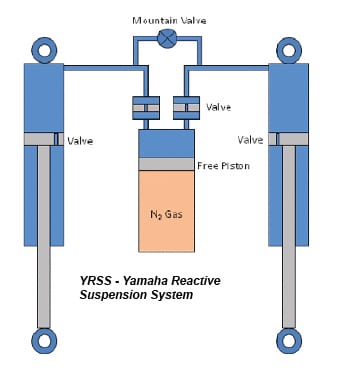
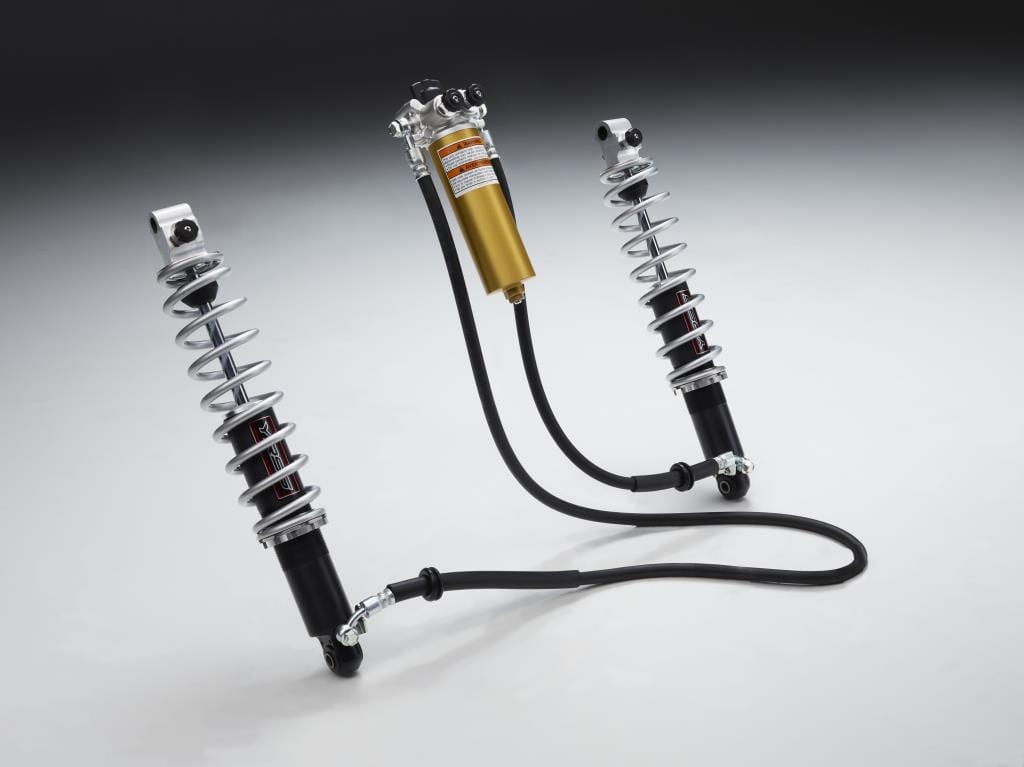
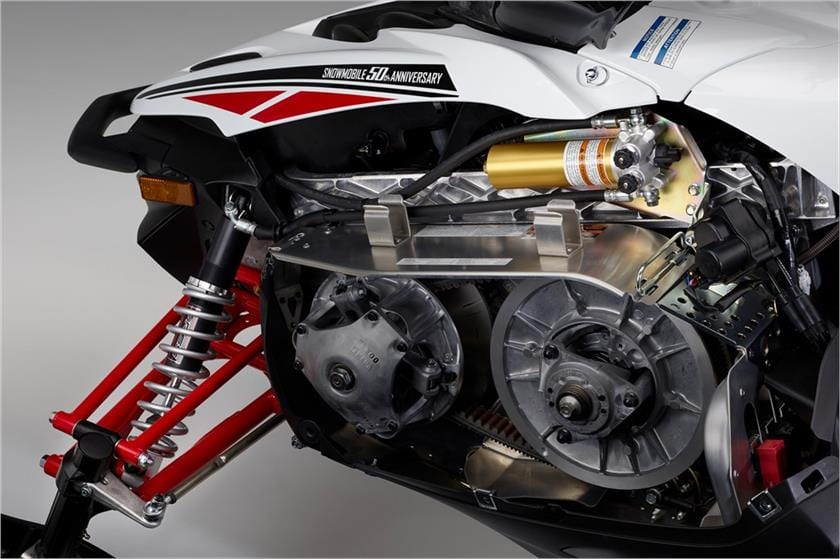
Yamaha engineers have adapted a system already known in the automotive world to the snowmobile. The REAS and X-REAS systems used by Toyota and DRC at Audi, among others, use similar operating principles to the YRSS. In fact, the goal is to hydraulically link the two front shock absorbers in order to create an interaction between them. Two modes are available via a valve, either normal or mountain mode. Both shocks use a single reservoir, which has a floating piston with pressurized gas, and hydraulic oil that travels from one shock to the other. When the valve is in the mountain position, i.e. open, some of the oil travels directly from one shock absorber to the other, which produces the opposite effect of a sway bar, if you compress the left shock absorber, the oil transfer will cause the opposite effect on the right shock absorber. This aspect can be interesting on a trail where the grip is very low, in a turn the weight is shifted to the outer ski, which will stretch the inner shock absorber giving more support to the ground for more bite. On the other hand, on a very hard surface, we want the front of the snowmobile to lower on both sides, to prevent the inner ski from lifting, and lowering the center of gravity. If the valve is in the normal position, the system will work in the same direction as the torsion bar, so when turning, a pressure on the outer shock absorber will push on the floating piston reducing the pressure in the inner shock absorber. This system allows to reduce the rolling effect in the turns without losing softness in the damping.
2018 Yamaha SRVenture
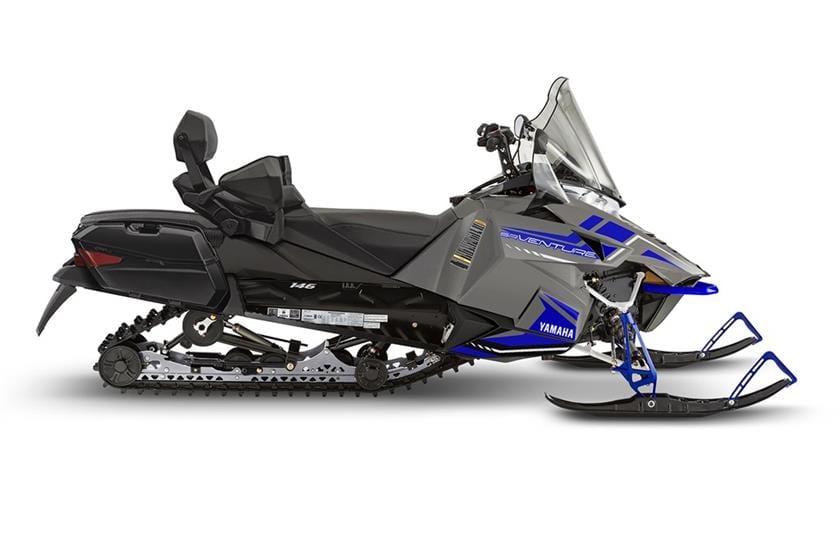
At last, some will say, we were waiting for it, we asked for it and it’s done for 2018! Although the old chassis had its glory days, the arrival of a two-seater with the new chassis became essential for Yamaha fans. Arctic Cat’s twin to the Pentera, the SRVenture will come fully equipped. Nothing has been neglected when it comes to comfort, with an extra high windshield for excellent wind protection, two standard mirrors, heated seats for the driver and passenger and a fully adjustable backrest. The passenger’s hands are well protected by the wind deflectors and warmed by the heated grips. In order to be able to easily connect heated visors or accessories, two 12-volt outlets are available, one in the front for the rider and one in the back for the passenger.
At the rear, we find the Dual Shock SR 146. This suspension is fully coupled with load blades, allowing a good comfort in solo mode as well as with two people. High pressure gas shocks (HPG) at the front and rear are standard.
To ensure good performance, the reliable and quiet Genesis 1049 CC 3-cylinder 4-stroke power the SRVenture. The track is a Ripsaw 15 X 146 X 1.25 for good traction while the third generation Tuner skis ensure good stability and grip without swaying in all conditions, undeniable for two-seater snowmobiles!
On the trail
The SRVenture has all the great qualities you would expect in a two-seater long-distance snowmobile. The wind protection is very effective, and the mirrors are well positioned and stable. The Genesis delivers respectable performance for this segment, and is quiet and vibration-free. In small bumps, the Dual Shock does a great job keeping the skis on the ground during acceleration as well as in turns. The Turner dual-pin skis offer very good traction without wobbling, but they are a bit heavy in the steering, especially at low speeds. In my opinion, the SRVenture is the best two-seater snowmobile produced by the Japanese manufacturer…
2018 Yamaha Snoscoot
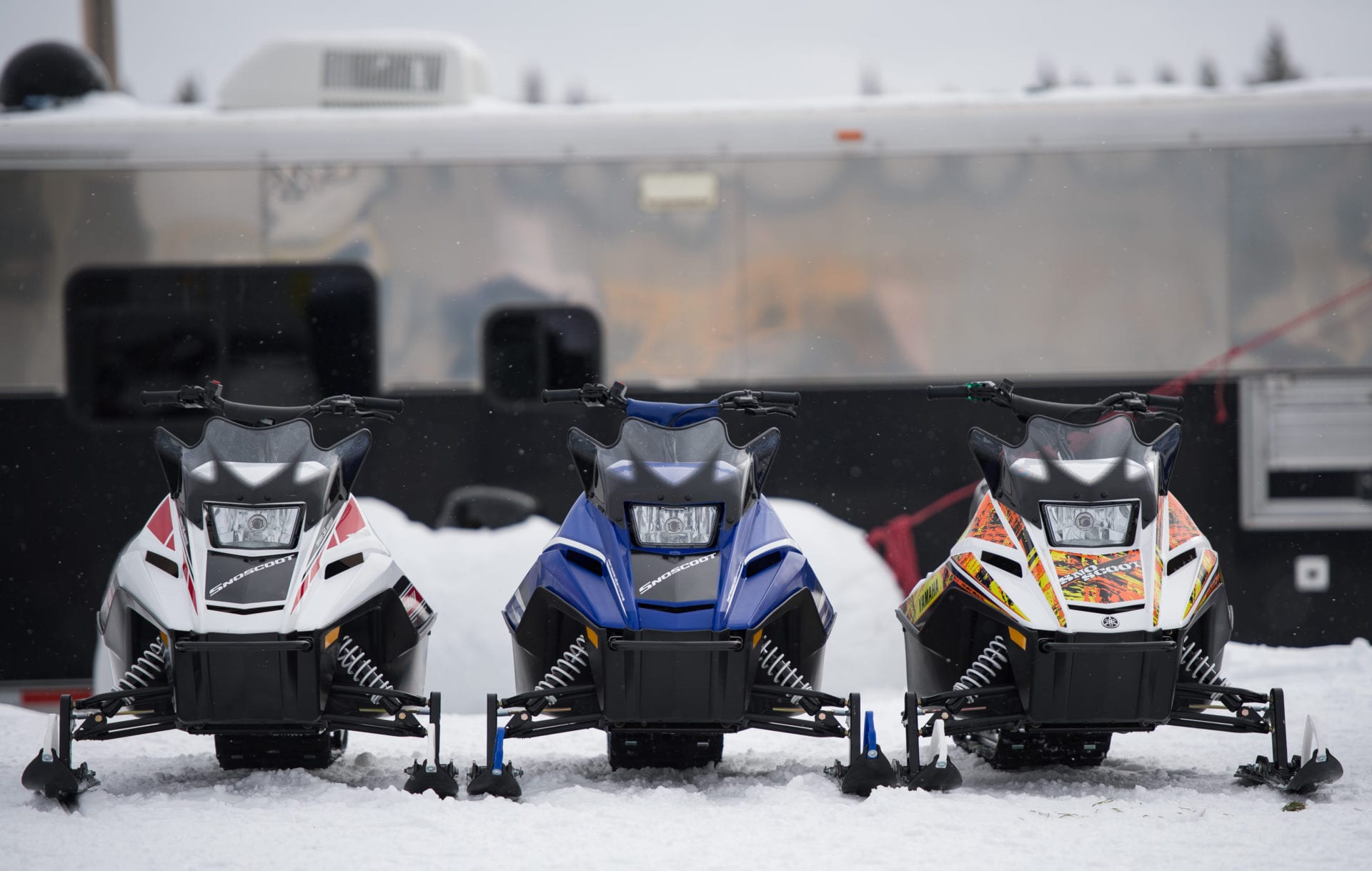
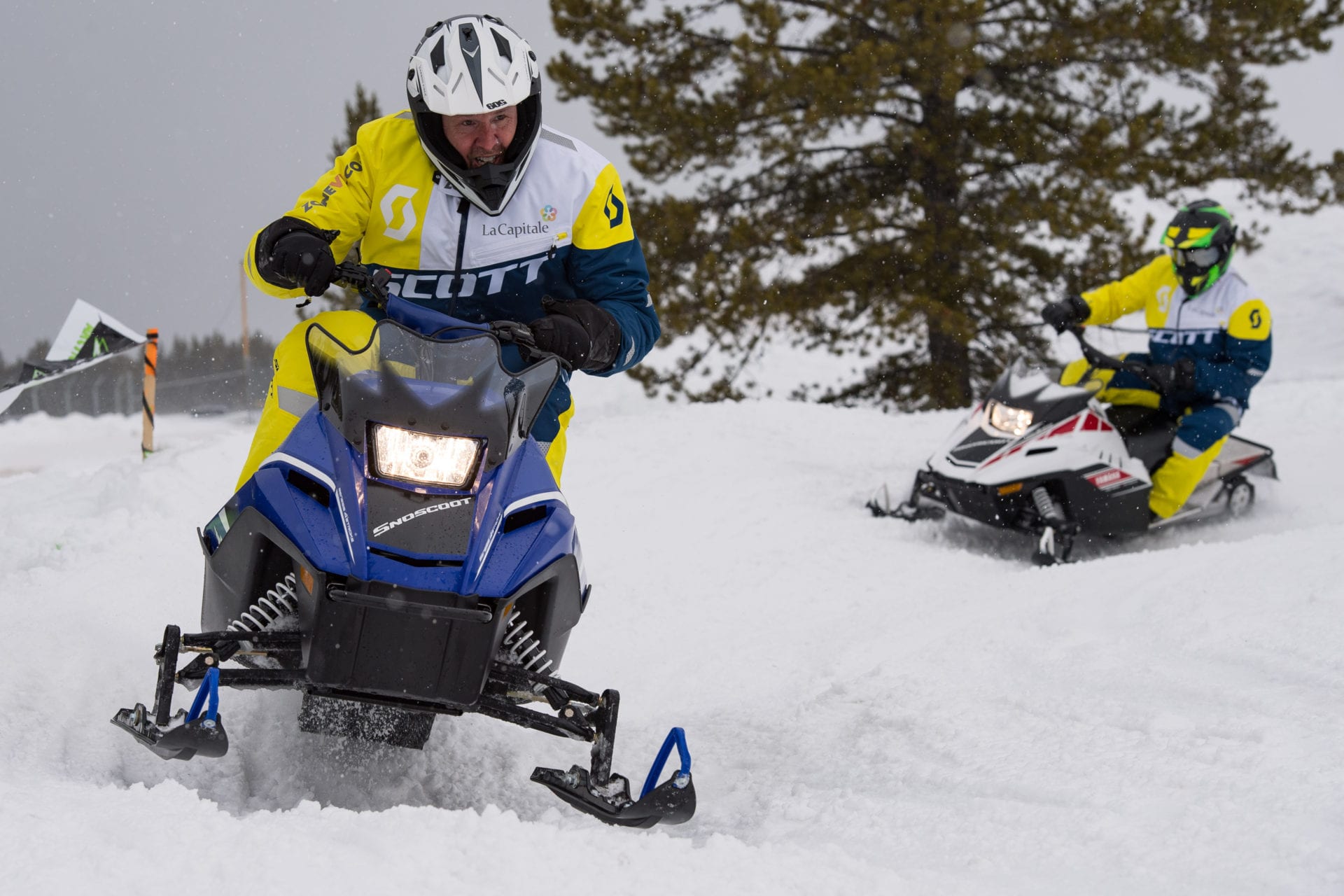
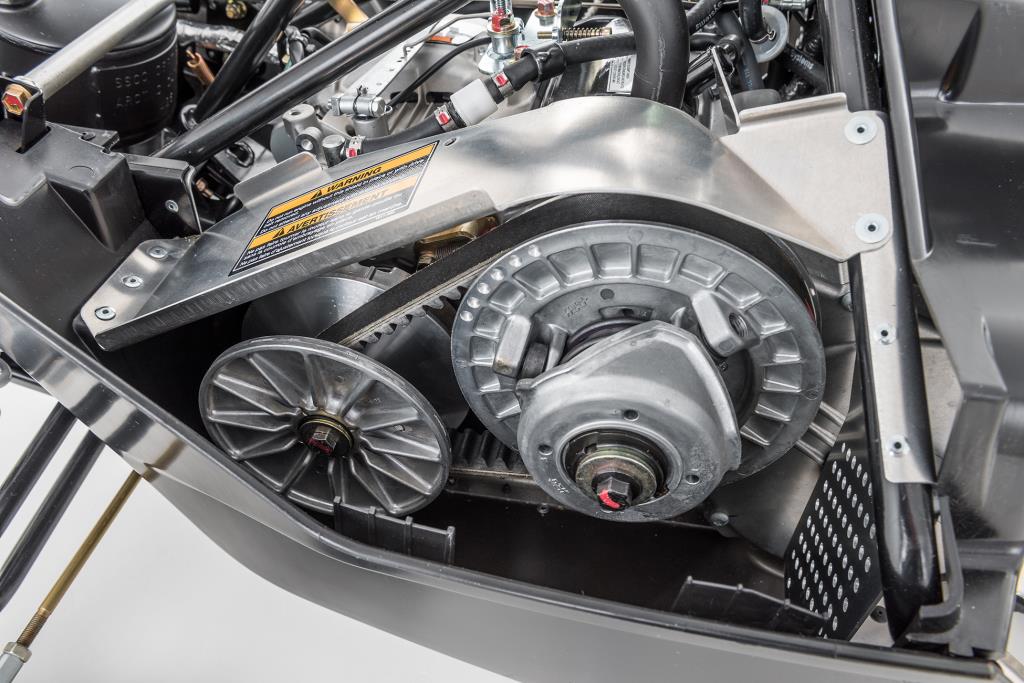
1988 was the first year of production for the Snoscoot. Produced for only three seasons at the time, Yamaha is back in the pre-teen segment! Although it bears the same name, it is very different in many ways. Under the hood is a 192 CC single-cylinder, 4-stroke, fan-cooled engine developing about 9 horsepower. The clutch is a variable pulley system (CVT), just like a real trail snowmobile. Top speed is around 55 kilometers per hour, and the throttle is adjustable if the need to decrease the power is necessary for greater safety with our youngsters. Independent front suspension with 4.5 inches of travel and rear suspension with torsion springs with 8.5 inches of travel.
Close to the Snowshoot parking area, at the West Yellowstone airport, the organization had set up a closed circuit where we could test the Snoscoot. Several turns and bumps were waiting for us, much to the delight of our childish hearts… Fun and surprising are the first words that come to mind. The suspensions are strong enough to support an adult’s weight, and the small 9 horsepower 4-stroke engine gives us enough to have a lot of fun, although the performance is reduced according to the weight. No doubt our young riders will have a lot of fun with this little machine.





